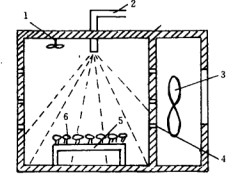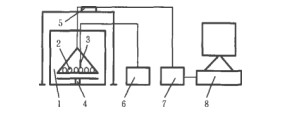Effect and Evaluation of Different Drying Methods on Six Chemical Components in Radix Paeoniae Alba

Abstract: The effects of different drying methods on the chemical constituents of monoterpenoid glycosides and phenolic acids in Radix Paeoniae Alba were studied to provide a basis for the determination of suitable drying methods for Radix Paeoniae Alba. Simultaneous determination of four monoterpenoid glycosides in samples prepared by different drying methods by HPLC The content of chemical components in the class and two phenolic acids; principal component analysis was performed using SPSS software, and the principal component scores were used for comprehensive evaluation.
The results showed that the white peony obtained by different drying methods can meet the requirements of white peony content and water content in the 2015 edition of Chinese Pharmacopoeia. The highest total amount of monoterpene glycosides and phenolic acids was obtained by vacuum freeze-drying. 248%, hot air 60 °C drying followed by 6. 141% ; The main scores of monoterpene glycosides and phenolic acids in the white peony treated by different drying methods were: vacuum freeze drying > hot air 60 °C drying > microwave drying equipment > far infrared drying > drying > Hot air 40 °C Drying > Hot air 80 °C Drying > Drying > Hot air 100 °C Drying.
Different drying methods have certain effects on monoterpene glycosides and phenolic acids in Radix Paeoniae Alba. Therefore, from the comprehensive analysis of the content, cost and practicality of each component, the hot air is dried at 60 ° C to be a suitable drying method for chalk.
Key words: white peony microwave drying; drying method; high performance liquid chromatography; principal component comprehensive evaluation
White peony is the dry root of Paeonia lactiflora Pall. It has the functions of nourishing blood and regulating menstruation, relieving yin and relieving sweat, softening liver and relieving pain, and calming liver and yang. Modern pharmacological studies have shown that the monoterpenoid glycosides, paeoniflorin and paeoniflorin contained in Radix Paeoniae Alba have pharmacological effects such as anti-inflammatory analgesic, immune regulation, and rheumatoid arthritis. The phenolic acids contained in the white peony, such as catechins, have antioxidant activity and prevent cardiovascular diseases, and gallic acid has anti-aging, anti-inflammatory and anti-cancer activities.
Medicinal processing refers to the initial processing of the raw materials such as the preliminary treatment and drying of the medicinal materials from the medicinal parts to the formation of commercial medicinal materials. The processing of the origin is an important part of the production and quality of the medicinal materials, and the drying process is especially critical. The traditional drying method has the disadvantages of long drying time, being susceptible to weather conditions, and uneven quality of the medicinal materials after drying.
With the deepening of the industrialization process of Chinese herbal medicine production, modern drying techniques such as hot air drying, microwave drying and freeze drying are applied in the processing of Chinese herbal medicines, and exhibit the advantages of short drying time, controllable drying conditions and stable product quality, such as Ginkgo biloba leaves can be dried by hot air at 80 °C, schisandra can be dried by hot air at 50 °C, and lily can be freeze-dried.
In the study of modern drying methods in the drying process of white peony, the author has not seen domestic (external) literature reports. This study intends to compare the effects of traditional and modern drying methods on monoterpene glycosides and phenolic acids in Radix Paeoniae Alba. The drying method in the processing of chalk is to seek a drying method which is more conducive to reducing the loss of active ingredients, in order to provide basis and reference for the future production of chalk products and efficient utilization of active materials and subsequent research.